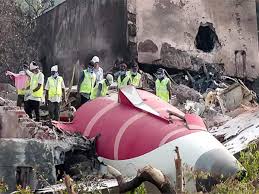Newly analyzed data from the cockpit voice recorder (CVR) of Air India Flight 171 has provided disturbing insight into what experts are now calling a “small, avoidable mistake” that likely led to the fatal crash. The aircraft, which went down minutes after takeoff from Ahmedabad, was carrying 242 passengers bound for London.
Cockpit Conversation Points to Confusion
According to aviation experts cited by multiple global news outlets — including the Daily Star— pilots were heard discussing aircraft settings moments before the crash. Specifically, the conversation revealed uncertainty over the flap and landing gear configuration during ascent.
This type of chatter isn’t necessarily alarming — unless, as one expert said, “you’re having the wrong conversation at the wrong time.”
“Gear Up” or “Flaps Up”? One Mistake That Changed Everything
Steve, an experienced aviation analyst and crash investigator, believes that a misheard command was at the heart of the tragedy.
“This is just my opinion,” Steve says in his viral crash analysis video.
“I think the pilot flying said to the co-pilot, ‘Gear up’ at the appropriate time. I think the co-pilot grabbed the flap handle and raised the flaps, instead of the gear — if that happened, this explains a lot of why this airplane stopped flying.”
Flaps help maintain lift during takeoff. Retracting them prematurely — especially at low altitude — can result in immediate and unrecoverable loss of lift, causing the plane to drop out of the sky.
Expert Opinions Align on Configuration Error
A growing number of aviation experts are voicing similar theories. As cited in the Daily Star, former pilots and crash analysts believe the accident points to a flap retraction or landing gear mismanagement during the aircraft’s initial climb.
Captain Steve Schreiber noted the high workload and confusion in the cockpit, a dangerous mix during early ascent.
Captain Rakesh Rai, who once flew the same Boeing aircraft, added:
“Incorrect flap timing or misusing the gear lever can cause drag to skyrocket or lift to vanish and in climb, that’s the worst possible time.”
What the Flight Data Shows
While the Flight Data Recorder (FDR) is still under analysis, early indications suggest the aircraft never climbed beyond 500 feet and suddenly lost altitude after a moment of abrupt thrust adjustment. This timeline aligns with the gear/flap confusion theory.
Aviation officials from the DGCA say a preliminary investigation supports this hypothesis but mechanical failure or software glitches have not been completely ruled out.
Tragedy Born of a Tiny Mistake
Though no official cause has been confirmed yet, this tragic event highlights how even highly trained crews can fall victim to procedural shortcuts, fatigue, or split-second errors under pressure.
What makes this crash particularly heartbreaking is how routine the procedure was — gear and flap adjustments are textbook parts of every flight.
Ongoing Investigations
The black box recordings are being further decoded for nuance and confirmation.
Air India is facing questions about training protocols, co-pilot experience, and recent staff fatigue reports.
A final accident report is expected later this year.
References
Daily Star – Expert details Air India pilots’ fatal mistake
News.com.au – “Something horrible” in CVR
The Daily Beast – Pilot explains aircraft sensitivity
The Scottish Sun – Diversion details
Stay connected for more verified updates as this story continues to unfold.












